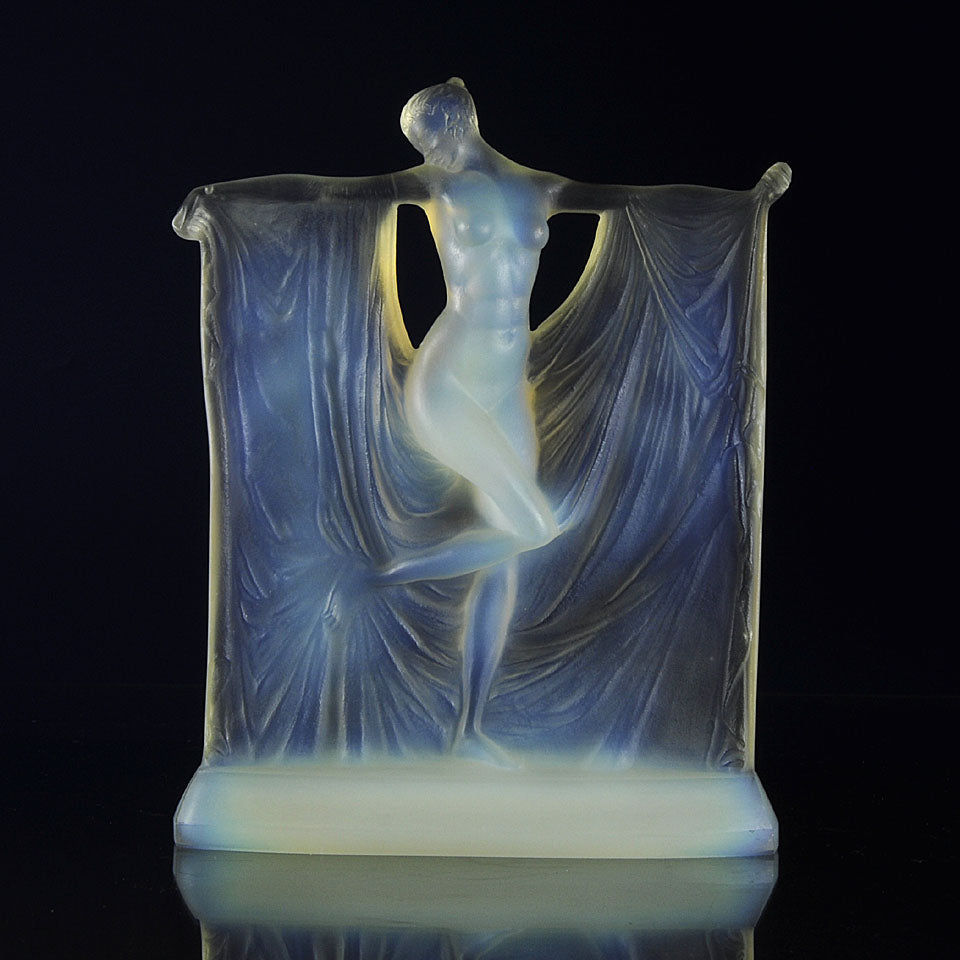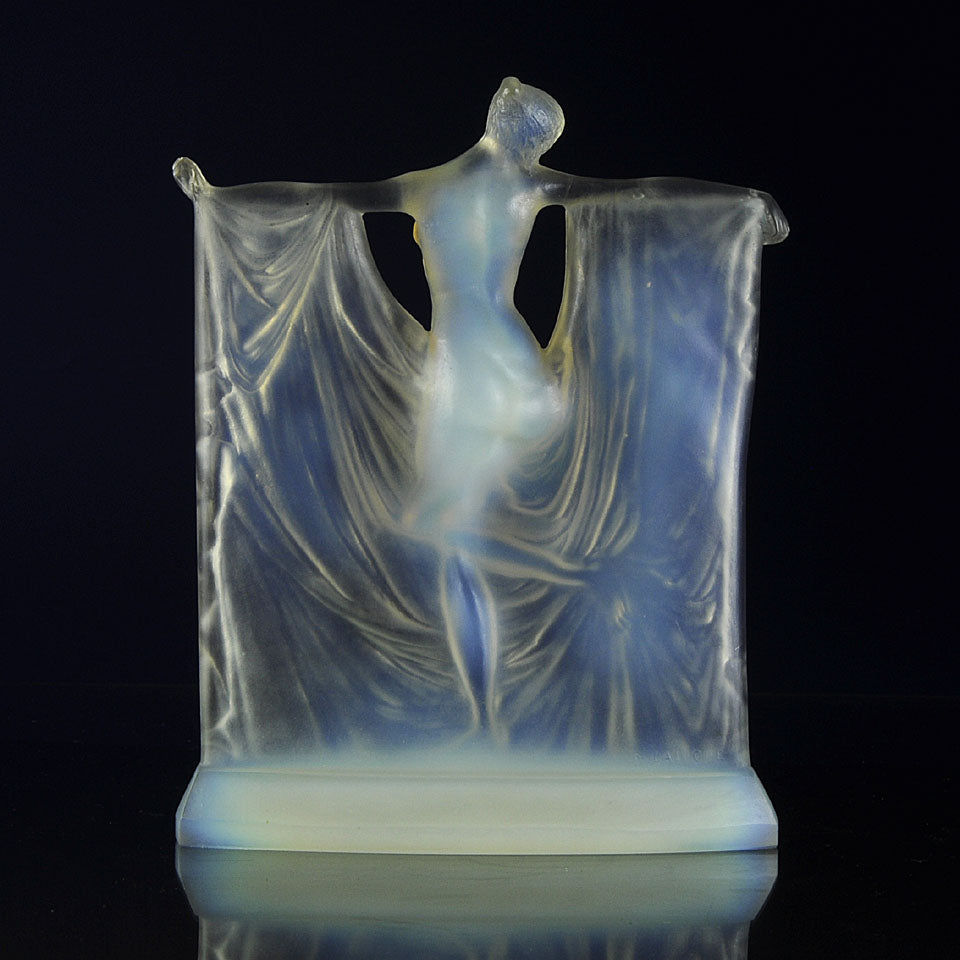Suzanne by Rene Lalique: The Grace of Glass in the Art Deco Age
- squint

- Aug 1
- 2 min read
In the golden age of Art Deco, few names resonated as powerfully in decorative arts as René Lalique. Famed for his ethereal mastery of glass, Lalique transformed traditional sculpture into a medium of modern elegance and sensuality. Among his most evocative works is “Suzanne”, a glass statuette introduced in 1925, which now resides in the Corning Museum of Glass.

A Figure of Timeless Poise
Standing approximately 23 centimeters tall, “Suzanne” captures a nude female figure in a moment of graceful modesty. She appears in soft motion either drying herself or caught mid-dance veiled in a translucent drape that falls delicately over her body. The opalescent glass ripples with bluish and amber tones, a characteristic effect of Lalique’s mold-pressed technique, giving the sculpture a spectral luminosity that shifts with the light.
The sculpture is not only remarkable for its technical refinement but also for its narrative ambiguity. Lalique’s “Suzanne” can be read as a reinterpretation of Susanna from the biblical Book of Daniel—a subject traditionally shown bathing and unaware of being watched. Yet in this case, the voyeuristic element is absent. Instead, the figure is self-contained and serene, embodying a modern ideal of female beauty and independence.
Artistry and Innovation
René Lalique (1860–1945), originally a jewelry designer, began working with glass in the early 20th century and quickly became a central figure in the transition from Art Nouveau to Art Deco. By the time “Suzanne” was created, he had mastered industrial techniques like mold-pressing and acid-etching, producing works that were both artistically and commercially groundbreaking.
This particular model catalogued as No. 833 in Félix Marcilhac’s definitive “Lalique Catalogue Raisonné” was first introduced on July 7, 1925, during a period of intense artistic productivity. “Suzanne” was featured in Lalique's commercial catalogs from 1928 to 1932 before being discontinued by 1937. Its form exemplifies the sleek, sensual curves and stylized human forms that defined Lalique’s mature work in glass.
A Personal Connection?
While the model may reference the biblical Susanna, it also bears the name of Lalique’s own daughter, Suzanne Lalique-Haviland (1892–1989), a noted painter and designer in her own right. Whether or not the piece was intended as a personal tribute remains uncertain, but the name invites speculation about the interplay between familial affection and artistic inspiration.
Suzanne Lalique-Haviland collaborated with her father on several projects and maintained a successful career in stage design and porcelain decoration. The resonance of the name “Suzanne” thus carries both symbolic and biographical weight in Lalique's oeuvre.

Preserving Elegance at Corning
The “Suzanne” sculpture in the Corning Museum of Glass was a gift from Elaine and Stanford Steppa, acquired in 2011 (Object ID: 2011.3.256). It is a pristine example of Lalique’s opalescent technique, highlighting his unparalleled ability to fuse industrial processes with the aesthetics of fine sculpture.
In a single figure rendered in glass, “Suzanne” captures the tension between modesty and sensuality, between classical form and modern technique. Nearly a century after its creation, it continues to embody the refined elegance that defined the Art Deco period—and the enduring vision of René Lalique.



